As Oil Threatens the Gulf, a Reading List of Ocean Books
As the oil gushing from the Deepwater Horizon rig in the Gulf of Mexico continues to pollute the waters and sully the shores, renewed attention is being paid to our fragile oceanic ecosystem and the many species of animals that call it home. Over the last several years, the University of Chicago Press has published a number of books related to the ocean and the creatures that inhabit it. Here’s a few of the titles that, in light of this tragic catastrophe, have become more timely than ever.
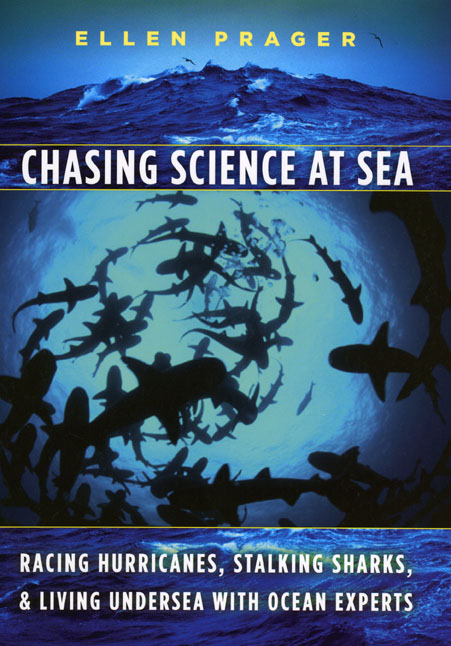 Although much has been made of the devastating losses to marine life, as well as the disruption to the livelihoods of those who depend on fishing the now blackened waters, another aspect of life in and on the oceans has been disrupted: scientific research. Ellen Prager’s passionate paean to science at sea immerses readers in the world of ocean scientists—aquanauts living underwater, marine biologists seeking unseen life in the deep ocean, and the tall-ship captains at the helm, among others—and tells the fascinating tale of what life—and science—is like at the mercy of Mother Nature. Filled with firsthand accounts of the challenges and triumphs of dealing with the extreme forces of nature and the unpredictable world of the ocean, Chasing Science at Sea is a unique glimpse below the water line at what it is like and why it is important to study, explore, and spend time in one of our planet’s most fascinating and foreign environments. Read an excerpt here.
Although much has been made of the devastating losses to marine life, as well as the disruption to the livelihoods of those who depend on fishing the now blackened waters, another aspect of life in and on the oceans has been disrupted: scientific research. Ellen Prager’s passionate paean to science at sea immerses readers in the world of ocean scientists—aquanauts living underwater, marine biologists seeking unseen life in the deep ocean, and the tall-ship captains at the helm, among others—and tells the fascinating tale of what life—and science—is like at the mercy of Mother Nature. Filled with firsthand accounts of the challenges and triumphs of dealing with the extreme forces of nature and the unpredictable world of the ocean, Chasing Science at Sea is a unique glimpse below the water line at what it is like and why it is important to study, explore, and spend time in one of our planet’s most fascinating and foreign environments. Read an excerpt here.
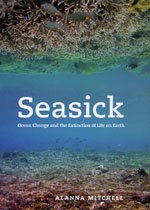 A fantastic companion to Prager’s book, Seasick: Ocean Change and the Extinction of Life on Earth focuses on conservation science. Here, veteran science journalist Alanna Mitchell dives beneath the surface to the sublime depths of sea and science to give readers a sense of how this watery realm can be managed and preserved, and so with it life on earth. Seasick follows scientists working to understand the oceans, and each chapter features a different group of researchers who introduce readers to the importance of ocean currents, the building of coral structures, and the effects of acidification. With Mitchell at the helm, readers are submersed 3000 feet to gather sea sponges that may contribute to cancer care, see firsthand the lava-lamp-like blob of dead zone covering 17000 square kilometers in the Gulf of Mexico, and witness the simultaneous spawning of corals under a full moon in Panama. The first book to look at the planetary environmental crisis through the lens of the global ocean, Seasick takes the reader on an emotional journey across a remarkable landscape and urges conversation and reverence for the fount from which all life on earth sprang.
A fantastic companion to Prager’s book, Seasick: Ocean Change and the Extinction of Life on Earth focuses on conservation science. Here, veteran science journalist Alanna Mitchell dives beneath the surface to the sublime depths of sea and science to give readers a sense of how this watery realm can be managed and preserved, and so with it life on earth. Seasick follows scientists working to understand the oceans, and each chapter features a different group of researchers who introduce readers to the importance of ocean currents, the building of coral structures, and the effects of acidification. With Mitchell at the helm, readers are submersed 3000 feet to gather sea sponges that may contribute to cancer care, see firsthand the lava-lamp-like blob of dead zone covering 17000 square kilometers in the Gulf of Mexico, and witness the simultaneous spawning of corals under a full moon in Panama. The first book to look at the planetary environmental crisis through the lens of the global ocean, Seasick takes the reader on an emotional journey across a remarkable landscape and urges conversation and reverence for the fount from which all life on earth sprang.
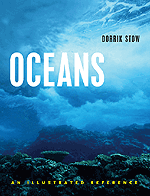 Four billion years old, the oceans formed as the Earth’s scorching surface cooled, the primordial atmosphere condensed, and torrential rains fell. Their color is the unique signature of our blue planet, their composition a chemical cocktail of remarkable variety, their waters a theater of constant change. Oceans: An Illustrated Reference tells the story of this last great frontier. With hundreds of beautiful full-color photographs and explanatory diagrams, charts, and maps, Oceans combines the visual splendor of ocean life with up-to-date scientific information to provide an invaluable and fascinating resource on this vital realm. Although the oceans are vast, their resources are finite. Oceans clearly presents the future challenge to us all—that of ensuring that our common ocean heritage is duly respected, wisely managed, and carefully harnessed for the benefit of the whole planet.
Four billion years old, the oceans formed as the Earth’s scorching surface cooled, the primordial atmosphere condensed, and torrential rains fell. Their color is the unique signature of our blue planet, their composition a chemical cocktail of remarkable variety, their waters a theater of constant change. Oceans: An Illustrated Reference tells the story of this last great frontier. With hundreds of beautiful full-color photographs and explanatory diagrams, charts, and maps, Oceans combines the visual splendor of ocean life with up-to-date scientific information to provide an invaluable and fascinating resource on this vital realm. Although the oceans are vast, their resources are finite. Oceans clearly presents the future challenge to us all—that of ensuring that our common ocean heritage is duly respected, wisely managed, and carefully harnessed for the benefit of the whole planet.
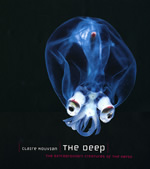 If you still aren’t convinced of the protect the diversity of life in the sea, take one look at the Dumbo Octopus and you’ll probably have a change of heart. That little guy is just one of the hundreds of bizarre and beautiful creatures featured in this photographic tour of the briny abyss. Combining the latest scientific discoveries with astonishing color imagery, The Deep takes readers on a voyage into the darkest realms of the ocean. Revealing nature’s oddest and most mesmerizing creatures in crystalline detail, The Deep features more than two hundred color photographs of terrifying sea monsters, living fossils, and ethereal bioluminescent creatures, some photographed here for the very first time. Accompanying these breathtaking photographs are contributions from some of the world’s most respected researchers that examine the biology of deep-sea organisms, the ecology of deep-sea habitats, and the history of deep-sea exploration. An unforgettable visual and scientific tour of the teeming abyss, The Deep celebrates the incredible diversity of life on Earth and will captivate anyone intrigued by the unseen—and unimaginable—creatures of the deep sea.
If you still aren’t convinced of the protect the diversity of life in the sea, take one look at the Dumbo Octopus and you’ll probably have a change of heart. That little guy is just one of the hundreds of bizarre and beautiful creatures featured in this photographic tour of the briny abyss. Combining the latest scientific discoveries with astonishing color imagery, The Deep takes readers on a voyage into the darkest realms of the ocean. Revealing nature’s oddest and most mesmerizing creatures in crystalline detail, The Deep features more than two hundred color photographs of terrifying sea monsters, living fossils, and ethereal bioluminescent creatures, some photographed here for the very first time. Accompanying these breathtaking photographs are contributions from some of the world’s most respected researchers that examine the biology of deep-sea organisms, the ecology of deep-sea habitats, and the history of deep-sea exploration. An unforgettable visual and scientific tour of the teeming abyss, The Deep celebrates the incredible diversity of life on Earth and will captivate anyone intrigued by the unseen—and unimaginable—creatures of the deep sea.
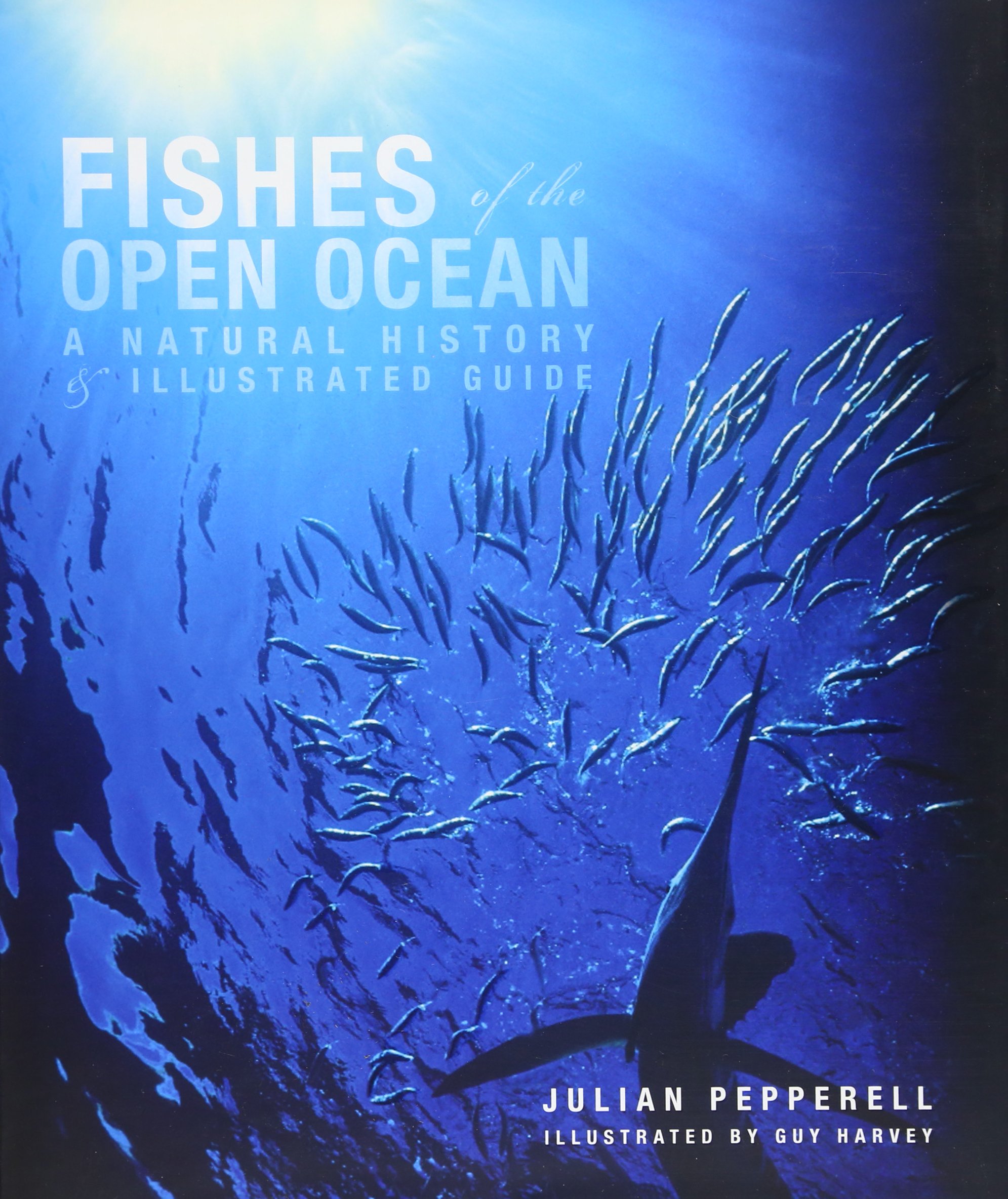 Sure, the sea monsters are fun to gawk at, but what about the fishes who spend their lives closer to the surface? These creatures at last get their moment in the sun, so to speak, in Julian Pepperell’s Fishes of the Open Ocean: A Natural History and Illustrated Guide. The first book to comprehensively describe these fishes and explore the complex and often fragile world in which they live, Fishes of the Open Ocean will be the definitive book on the subject for years to come—and, with over three hundred color images, the most lavishly produced as well. (Discover magazine has an online gallery of images from the book. Though these species might be more familiar to us than the oddities of the deep sea, they are nonetheless still magnificent. Check out the oarfish, the creature likely mistaken for sea serpents by mariners of the past. Or take a closer look at a hammerhead shark. After you’ve browsed the gallery, take a look at sample pages from the book, too.)
Sure, the sea monsters are fun to gawk at, but what about the fishes who spend their lives closer to the surface? These creatures at last get their moment in the sun, so to speak, in Julian Pepperell’s Fishes of the Open Ocean: A Natural History and Illustrated Guide. The first book to comprehensively describe these fishes and explore the complex and often fragile world in which they live, Fishes of the Open Ocean will be the definitive book on the subject for years to come—and, with over three hundred color images, the most lavishly produced as well. (Discover magazine has an online gallery of images from the book. Though these species might be more familiar to us than the oddities of the deep sea, they are nonetheless still magnificent. Check out the oarfish, the creature likely mistaken for sea serpents by mariners of the past. Or take a closer look at a hammerhead shark. After you’ve browsed the gallery, take a look at sample pages from the book, too.)
Be sure to check out all our books on the ocean. And let’s hope for a swift resolution to the Gulf crisis.